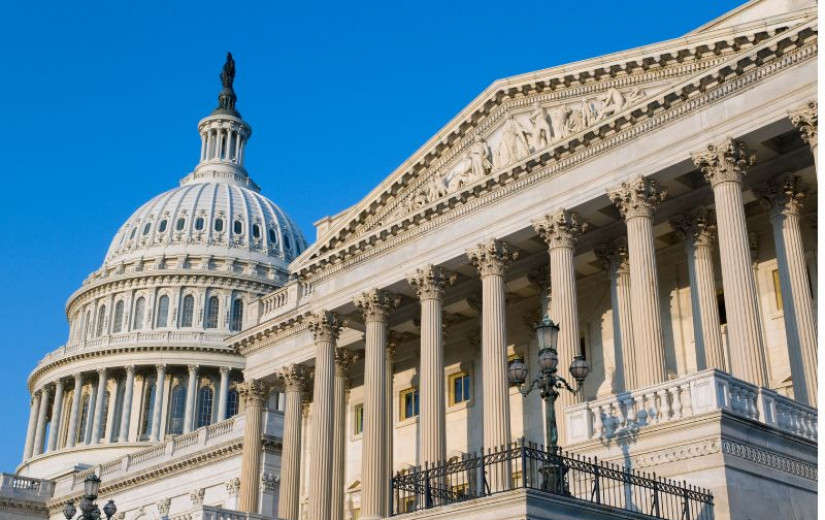
Everyone is talking about AI nowadays. From tech professionals to non-tech, medical to mechanical industry experts and even politicians are wary of the coming wave of this great innovation. In the digital marketing field, it is already here, and there is a rush to adapt and make the most of it. If you’ve been feeling like Artificial Intelligence (AI) is changing faster than you can keep up with, you’re not alone. For most marketers, AI feels both exciting and overwhelming. Budgets are tighter, tools are smarter, and there’s constant pressure to prove results while staying creative. Most of the marketing professionals are looking for the best resources to understand this wave, but the information blitzkrieg confuses them even more.
That’s exactly why I have created this detailed breakdown on how AI is reshaping digital marketing in 2025 — and what marketers can do to stay ahead.
From content creation and media buying to personalisation and customer experience, AI is quietly (and rapidly) rewriting every rule we knew about digital marketing.
Let’s break down the five biggest ways AI is transforming the industry, with practical insights you can apply today.
Overview of the Blog
AI in Personalisation and Customer Targeting
AI in Content Creation and Automation
Predictive Analytics: Smarter Decision-Making
AI in Media Buying and Campaign Optimisation
Enhancing Customer Experience with AI
How to Adapt and Stay Ahead in the AI Marketing Era
1. AI in Personalisation and Customer Targeting
One-size-fits-all marketing is officially over. In 2025, personalisation isn’t just about using someone’s first name in an email — it’s about understanding what they want before they do.
Smarter Segmentation
AI analyses billions of data points in seconds — purchase history, browsing behaviour, even micro-interactions like how long someone hovers over an ad. This helps marketers predict what each user is most likely to buy next.
For example, Netflix’s AI doesn’t just recommend shows — it predicts your next binge before you realise you’re in the mood for one. Amazon’s recommendation engine works the same way, using predictive algorithms to boost conversions by up to 35%.
Real-Time Adaptation
AI tools dynamically adjust campaigns based on live data. If a user interacts more with videos than images, the system automatically serves more video ads. Platforms like Google Ads’ Performance Max and Meta’s Advantage+ already rely heavily on this intelligence.
Actionable Tip
Use tools like HubSpot AI, Segment, or Insider to automate personalisation across channels. Start small — create audience clusters based on engagement, then scale as the model learns.
Bottom line: AI transforms personalisation from reactive to predictive, ensuring every impression counts.
2. AI in Content Creation and Automation
The debate over whether AI can be creative is over — it can, and it already is. What used to take marketing teams days now happens in minutes.
Faster Content Generation
Tools like ChatGPT, Jasper, and Copy.ai help marketers generate ad copies, captions, product descriptions, and emails instantly. AI analyses tone, emotion, and intent — making content more audience-aligned than ever before.
For instance, Coca-Cola recently used AI to generate entire campaign visuals and taglines in minutes — something that used to take weeks of creative iteration.
Design and Visual Creation
Generative AI tools like Midjourney, DALL·E, and Canva’s Magic Studio make it easy to produce professional-quality visuals without design teams. This democratizes creativity and keeps campaigns fresh even with tight timelines.
Practical Use Cases
Use AI to draft multiple ad variations for A/B testing.
Automate social media scheduling with AI-powered captioning tools.
Generate SEO blog drafts, then polish them manually for brand tone.
A Balanced Approach
AI should be your creative assistant, not your replacement. Let it handle repetitive tasks while you focus on storytelling and emotion — the parts of marketing machines can’t replicate.
In short: AI doesn’t remove creativity — it multiplies it.
3. Predictive Analytics: Smarter Decision-Making
Data-driven marketing isn’t new — but AI is changing how fast and how accurately marketers can act on it.
From Data to Decisions
Predictive analytics turns historical data into actionable foresight. Instead of asking “What happened?”, marketers can now ask “What will happen next?”
For example:
E-commerce brands predict when a customer is most likely to repurchase.
Streaming platforms forecast user churn weeks in advance.
Retailers use AI to predict the best time to launch sales campaigns.
Tools Making It Happen
Platforms like Google Analytics 4, Tableau AI, and Power BI now integrate machine learning directly into dashboards, providing marketers with predictive insights — not just past performance.
Real-World Impact
A study by McKinsey found that brands using predictive analytics see 20% higher conversion rates and 15% better ROI.
Action Step
Feed clean, consistent data into your AI tools. Garbage in = garbage out. Start with first-party data and use AI to spot trends before competitors do.
Bottom line: Predictive analytics turns marketing from guesswork into science.
4. AI in Media Buying and Campaign Optimisation
Remember when marketers had to manually set bids and placements? That era’s gone. AI now runs thousands of ad decisions in milliseconds — optimising spend automatically.
Programmatic Advertising 2.0
Platforms like Google DV360, Amazon DSP, and The Trade Desk use AI to automate buying, placement, and creative testing — ensuring every rupee spent drives measurable results.
The system learns continuously — adjusting targeting, placements, and bids in real-time. That means no wasted ad spend, no delayed insights.
Smarter Campaign Optimisation
AI identifies trends before humans notice them — spotting ad fatigue, poor placements, or audience saturation instantly. Campaigns evolve live, instead of waiting for weekly reports.
For example, Nike uses AI to shift budgets between campaigns automatically based on ROI performance, boosting efficiency without manual intervention.
Actionable Steps
Use automated bidding in Google Ads and Meta campaigns.
Combine AI-based attribution models for accurate cross-channel performance.
Test dynamic creatives that adapt to user behaviour automatically.
Key takeaway: AI isn’t just saving time — it’s turning media buying into an intelligent, self-optimising system.
5. Enhancing Customer Experience with AI
While AI excels at data, its biggest contribution is improving human experiences. From smarter chatbots to personalised recommendations, AI creates seamless, meaningful interactions at scale.
Conversational AI
Modern chatbots like Drift, Intercom, or ChatGPT-powered assistants don’t just answer FAQs — they understand intent, tone, and context. This reduces friction and improves satisfaction.
Sephora’s AI assistant, for example, recommends products based on skin tone and previous purchases. It feels more like talking to a consultant than a bot.
AI in Email and CRM
AI predicts when a user is most likely to open an email or engage with a push notification. This increases click-through rates significantly while reducing spam complaints.
Augmented Customer Support
Brands like Starbucks use predictive AI (“Deep Brew”) to suggest drinks based on purchase patterns and local weather — blending data with delightful human experiences.
Actionable Insights
Use AI-driven chatbots for round-the-clock support.
Implement sentiment analysis to monitor customer mood.
Personalise after-sales communication using behavioural data.
The goal: Deliver empathy at scale — powered by data, but driven by understanding.
6. How to Adapt and Stay Ahead in the AI Marketing Era
With AI evolving rapidly, staying current can feel impossible. But it’s all about working smarter, not harder.
Here are six simple steps to keep up:
Follow Reliable AI & Marketing Sources — Stick to a few trusted blogs, newsletters, or YouTube channels like Think with Google, HubSpot, and Marketing AI Institute.
Experiment Early — Don’t wait for trends to become mainstream. Test AI tools early on small projects.
Invest in First-Party Data — With privacy regulations tightening, owning your data is more important than ever.
Balance Human + Machine Collaboration — Let AI automate the “how,” while you define the “why.”
Track What Matters — Measure real engagement (time on site, conversions), not just vanity metrics like impressions.
Keep Learning — AI marketing evolves weekly. Webinars, case studies, and practical experimentation keep you sharp.
Pro Tip: Start by integrating one AI tool per quarter. Focus on mastering it before moving to the next — sustainable adoption always beats trend chasing.
Conclusion: Embracing the AI Revolution
It’s clear that AI isn’t just an add-on to marketing anymore — it is marketing. From predicting customer behaviour to creating content and optimising campaigns, AI is the silent partner behind every modern success story.
But amidst all the automation, one thing remains constant: the human touch. The brands that will thrive aren’t the ones that replace people with machines, but those that use AI to enhance creativity, empathy, and storytelling.
AI gives you the power to do more — faster, smarter, and better. The question is, how will you use it?
Because in the next decade, it won’t be the biggest marketers who win — it’ll be the smartest. At last, one thing that will never get outdated is the product quality itself because the most effective marketing tool is the product itself.
FAQ’s
1. How is AI transforming digital marketing?
AI is making marketing faster, smarter, and more precise. It automates personalisation, content creation, and campaign optimisation while improving customer experience across platforms.
2. What are the top AI tools for marketers in 2025?
Some leading tools include ChatGPT, HubSpot AI, Google Performance Max, Jasper, Canva Magic Studio, and Tableau AI — each serving different stages of the marketing funnel.
3. Will AI replace human marketers?
Not entirely. AI will automate repetitive tasks, but creativity, emotional intelligence, and storytelling still require human expertise. The future belongs to marketers who can blend both effectively.
4. How can small businesses use AI affordably?
Start with free or low-cost tools like ChatGPT, Mailchimp AI, or Canva Magic Write. Automate small workflows — like content drafts or ad targeting — and scale gradually as ROI improves









